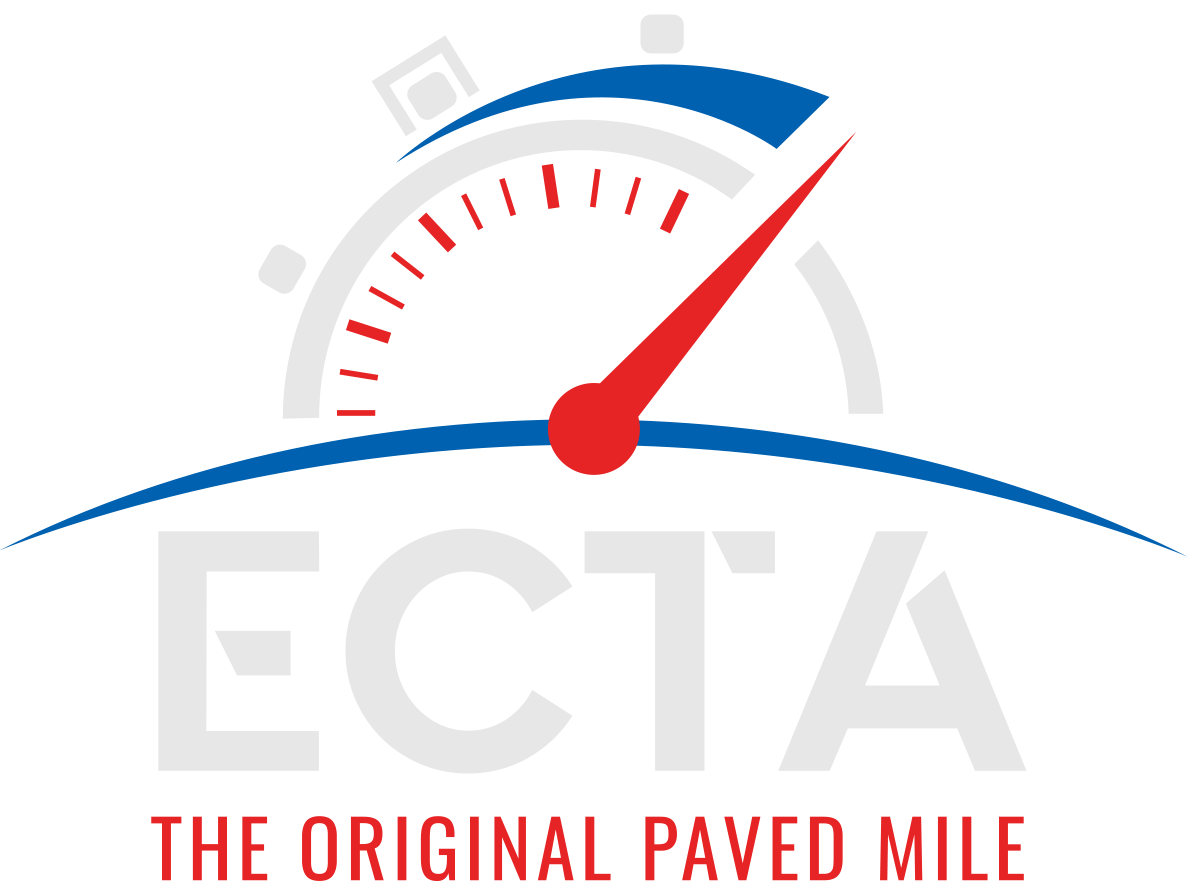Motorcycle Safety Requirements
Motorcycle Safety Requirements
These are just some of highlights of the safety requirements for motorcycles; you will need to purchase a rulebook to ensure your total compliance.
Engine/Motor Stop Switch:
All motorcycles must have a positive-off kill switch that is able to stop a running engine, remain shut-off once activated, and be operated without removing the riderʼs hands from the handlebar grips.
Ignition Kill Switch Lanyard:
All motorcycles, except streamliners, shall be equipped with a tether-type mechanical devise attached to the vehicle and the rider so the engine ignition is shut off if the rider becomes separated from the motorcycle.
Tire Requirements:
All competitors going over 187 MPH must sign the tire waiver form. All ZR, Z, V, H or lower rated tires shall have been produced within the last ten years as of the date of the current event. Sidewall date coding will be checked. Tubeless, bias ply type tires may be run with tubes. Tires designed for use on the drive wheel in drag racing will not be allowed. It is the responsibility of the entrant to check inflation pressures and tire and wheel condition immediately before and after every run. All motorcycle entries, including streamliners and sidecars, must use tires with an appropriate speed rating. The required speed rating is governed by the record speed in the class entered. Tires rated H CANNOT be used beyond the speed rating. Any run in excess of 200 MPH requires that the contestant examine tires for apparent deterioration or damage before further runs are conducted.
- 0 to 50 MPH Any tire designed for motorcycle use is permitted
- 51 to 130 MPH Production tire maximum speed rating J=62 MPH, K=68 MPH, L=74 MPH, M=81 MPH, N=87 MPH, P=94 MPH, Q=100 MPH, R=106 MPH, S=112 MPH, T=118 MPH, U=124 MPH, H=130 MPH
- 131 to 150 MPH Production tire designed for motorcycle use with a speed rating of V or higher.
- 151 MPH+ Production tire designed for motorcycle use with a speed rating of ZR or special tires for racing as designated by the manufacturer. Production tires with a speed rating of V, if shaved, can be used up to 200 MPH.
- Above 187MPH All racers are required to sign a tire wavier before competing.
- 200 MPH+ In excess of 200 MPH special tires for racing as designated by the manufacturer must be used.
- 265 MPH+ Contestants shall use LSR or Racing Tires rated for speeds higher than the class record.
- Any tire deviation or the use of any non-pneumatic wheel/tire combination shall be submitted in writing in accordance with the RULE DEVIATION procedure, Section 1.R.
- Any wheel/tire combination that has a square edge at the tread/sidewall is strictly forbidden. Due to the duration of this event, rear drag tires are not acceptable.
Valve Stems and Caps:
All tire valve stems must be fitted with metal valve caps with o-ring. Over 175 MPH, tubeless tires must use metal valve stems. Tube type tires with rubber valve stems that are angled relative to the rotational plane of the wheel must have those valve stems secured to resist centrifugal force deflection. Safety wire or other approved restraining device is required.
Wheel Retention:
All axle-retaining nuts, pinch bolts, axle caps and axles shall be safety wired or therwise secured by visually verifiable means. Lock washers, self-locking nuts or thread-locking compounds do not meet this requirement.
Steering Dampener: Required in all classes over 125 MPH.
Chain Guard:
All chain or belt driven motorcycle entries (Streamliners see Section 7.H.22) must be equipped with a steel or aluminum chain or belt guard. If the guard is made of steel it must be at least 3/32 in. thick, or if aluminum, at least 1/8 in. thick. Guards must be securely mounted in at least two places. The top run must be at least 1-1/2 times the overall width of the chain or at least ¼ in. wider than the belt. The chain/belt must be guarded from the center of the front sprocket to the rear most edge of the rear sprocket measured vertically. Primary drives or exposed clutches must also have a side cover to prevent rider from getting entangled. OEM chain guards may not be adequate.
Rider’s Helmet:
- All riders shall wear a full-face helmet with face shield, which must meet Snell Foundation M2005 OR later specifications or European ECE 22.05 or E 22.05, 2010 or newer.
- No open face helmets will be allowed. Helmets will be visually inspected at least once each year. Helmets must be undamaged, unmodified and in serviceable condition.
- Eyeglasses worn under the helmet must be shatterproof.
- Helmets with a Snell rating label of 2005 will expire in January 1, 2017, helmets with a Snell rating label of 2010 will expire on January 1, 2022.
- Streamliner riders must use a Snell Foundation SA2005 or later specification helmet.
- Riders must demonstrate proper helmet fit and “roll off” resistance.
Leathers:
- Leathers certified by a recognized manufacturer to be suitable for the application are required.
- One-piece suits or two-piece suits zippered together are allowed.
- Required over 175 MPH: One-piece leathers or two-piece leathers with full (270 degree) zipper.
- Also required over 175 MPH: Special protective armor, as produced by a recognized manufacturer, with minimum coverage at elbows, knees, shoulders, hips and back.
- Undergarments having the required armor coverage are acceptable, when the undergarment is worn with the required leather suit.
Boots:
Zipper, buckle or lace up leather boots of substantial construction are required and must be at least 8 in. high.
Gloves:
Leather gloves are required. No perforated or skeleton gloves are permitted.
Engine/Motor Stop Switch:
All motorcycles must have a positive-off kill switch that is able to stop a running engine, remain shut-off once activated, and be operated without removing the riderʼs hands from the handlebar grips.
Ignition Kill Switch Lanyard:
All motorcycles, except streamliners, shall be equipped with a tether-type mechanical devise attached to the vehicle and the rider so the engine ignition is shut off if the rider becomes separated from the motorcycle.
Tire Requirements:
- All competitors going over 187 MPH must sign the tire waiver form.
- All ZR, Z, V, H or lowerrated tires shall have been produced within the last ten years as of the date of the current event. Sidewall date coding will be checked.
- Tubeless, bias ply type tires may be run with tubes. Tires designed for use on the drive wheel in drag racing will not be allowed.
- It is the responsibility of the entrant to check inflation pressures and tire and wheel condition immediately before and after every run.
- All motorcycle entries, including streamliners and sidecars, must use tires with an appropriate speed rating.
- The required speed rating is governed by the record speed in the class entered.
- Tires rated H CANNOT be used beyond the speed rating.
- Any run in excess of 200 MPH requires that the contestant examine tires for apparent deterioration or damage before further runs are conducted.
- 0 to 50 MPH Any tire designed for motorcycle use is permitted
- 51 to 130 MPH Production tire maximum speed rating J=62 MPH, K=68 MPH, L=74 MPH, M=81 MPH, N=87 MPH, P=94 MPH, Q=100 MPH, R=106 MPH, S=112 MPH, T=118 MPH, U=124 MPH, H=130 MPH<
- 131 to 150 MPH Production tire designed for motorcycle use with a speed rating of V or higher.
- 151 MPH+ Production tire designed for motorcycle use with a speed rating of ZR or special tires for racing as designated by the manufacturer.
- Production tires with a speed rating of V, if shaved, can be used up to 200 MPH.
- Above 187MPH All racers are required to sign a tire wavier before competing.
- 200 MPH+ In excess of 200 MPH special tires for racing as designated by the manufacturer must be used.
- 265 MPH+ Contestants shall use LSR or Racing Tires rated for speeds higher than the class record.
- Any tire deviation or the use of any non-pneumatic wheel/tire combination shall be submitted in writing in accordance with the RULE DEVIATION procedure, Section 1.R.
- Any wheel/tire combination that has a square edge at the tread/sidewall is strictly forbidden. Due to the duration of this event, rear drag tires are not acceptable.
Valve Stems and Caps:
- All tire valve stems must be fitted with metal valve caps with o-ring.
- Over 175 MPH, tubeless tires must use metal valve stems.
- Tube type tires with rubber valve stems that are angled relative to the rotational plane of the wheel must have those valve stems secured to resist centrifugal force deflection.
- Safety wire or other approved restraining device is required.
Wheel Retention:
- All axle-retaining nuts, pinch bolts, axle caps and axles shall be safety wired or otherwise secured by visually verifiable means.
- Lock washers, self-locking nuts or thread-locking compounds do not meet this requirement.
Steering Dampener: Required in all classes over 125 MPH.
Chain Guard:
- All chain or belt driven motorcycle entries (Streamliners see Section 7.H.22) must be equipped with a steel or aluminum chain or belt guard. If the guard is made of steel it must be at least 3/32 in. thick, or if aluminum, at least 1/8 in. thick.
- Guards must be securely mounted in at least two places.
- The top run must be at least 1-1/2 times the overall width of the chain or at least ¼ in. wider than the belt.
- The chain/belt must be guarded from the center of the front sprocket to the rear most edge of the rear sprocket measured vertically. Primary drives or exposed clutches must also have a side cover to prevent rider from getting entangled. OEM chain guards may not be adequate.



